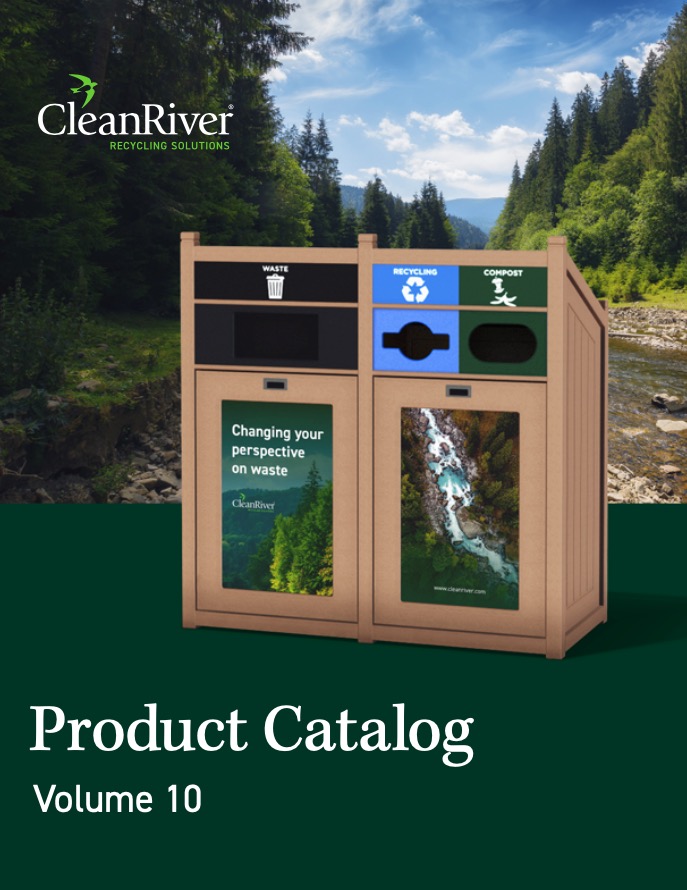Share
Elementary Students
1. Conduct A Classroom Waste Audit
In many elementary schools, students are still required to eat lunch in their classrooms, so it’s important that each class has its own set of waste and recycling bins.
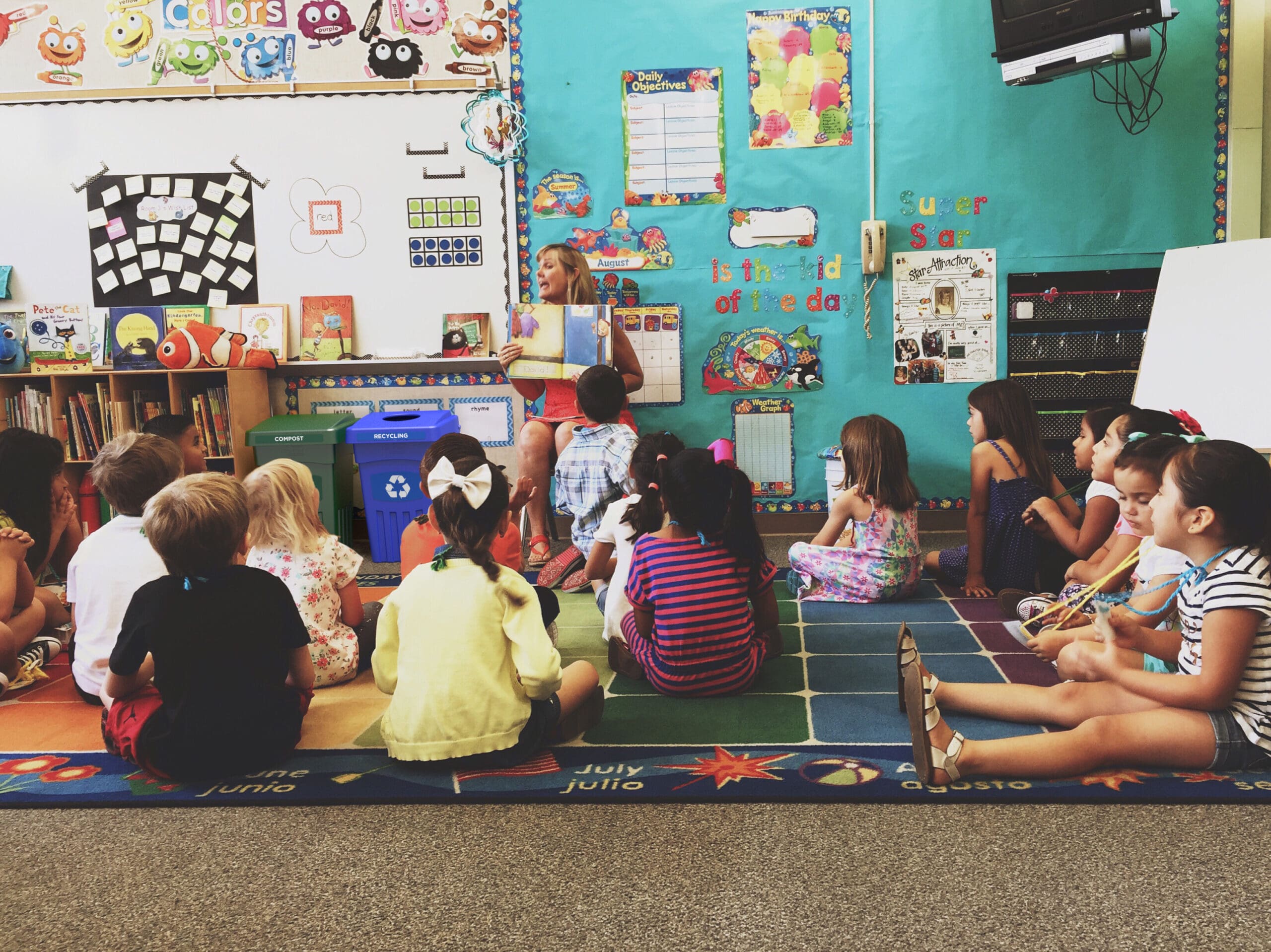
To give kids a better understanding of the school recycling program and how they can effectively participate, you need to get them to understand what they are tossing out and where it belongs.
As a class, conduct a waste audit at the end of the day for three days in a row. With gloves and clear bags, ask students to identify what they are tossing, where they are tossing, and where certain items should be tossed. Have a group discussion about their learnings, what they are doing well, areas of improvement, and have them brainstorm ways to communicate the recycling program.

2. Get Students Excited About Recycling
There are so many great resources, books, and tools to get students excited, educated, and aware of why recycling and sustainability is so important these days. Here are some of our favorite tools that can be used by teachers and parents to instill a passion for protecting the environment/ ecosystems and reducing our waste:
Ontario Ecoschools. Their mission is to nurture environmental leaders, reduce the ecological impact of schools, and build environmentally responsible school communities. Ontario Ecoschools helps:
- Certify K-12 schools in environmental learning and action
- Create a vibrant network of schools, school boards, and community partners
- Build strong EcoTeams with training sessions and tools
- Embed ecological literacy into the curriculum and daily practices
Project Nest Box connects students with nature by supplying bird nest boxes made from recycled plastic, to K-12 schools across North America.
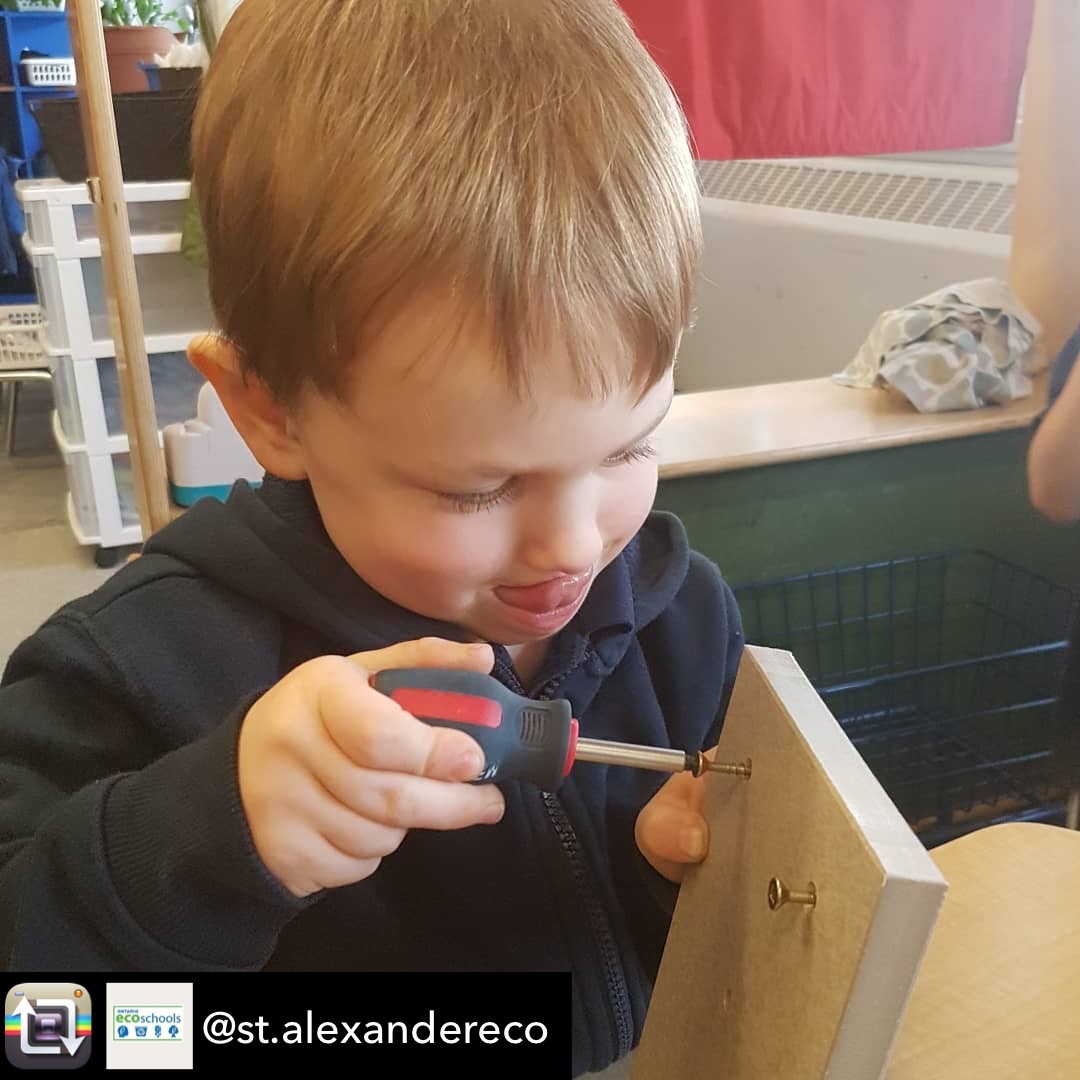
National Geographic for Kids has lots of resources about endangered species, protecting the environment, and battling plastic pollution, lessons, quizzes and educational videos.
Kids Take Action Against Ocean Plastic Short Film
Despite the vastness of Earth’s oceans, plastic pollutants are turning up everywhere, from the deep sea to the Arctic ice pack. In this short film from filmmaker Chris Hanson, 17 Hawaiian students study the impact of plastic pollution on their local beaches.
TED-ED is another great educational channel offering many different videos on a variety of topics including recycling and plastic pollution.
Little Green Books is ideal for the younger grades, this series of picture books are made from recycled material and teach kids to be more eco-friendly:
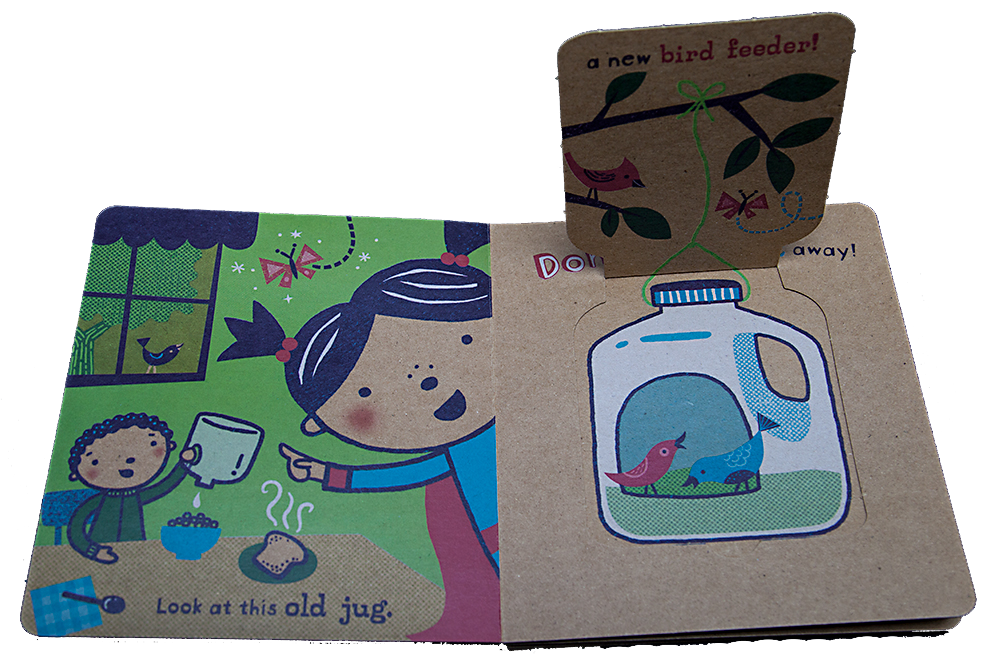
- The Adventures of a Plastic Bottle
- The Adventures of an Aluminum Can
- I Can Save the Earth (One little monster learns to Reduce, Reuse and Recycle)
3. Get Students Engaged
Hold a recycling challenge to clean the school. Many schools ask students to spend a few hours a couple times a year cleaning the school yard and picking up litter. Take it a step further and once the litter is collected ask classes to sort the waste into the appropriate streams. Make it a class challenge about which class can collect and properly sort the most waste according to your recycling program streams.

We’ve worked with schools that have held a weekly competition where the school caretaker awards the “cleanest” class with the “Golden Garbage Can” (literally a gold spray painted garbage can). At the end of the year the class that has held the longest winning streak gets a free pizza lunch. *Be sure that the “cleanest class” inspection includes the school’s recycling program criteria and has the least contaminated streams.
4. Design The Recycling Bin Graphics
Get the students involved in identifying what items go in what stream and let them be a part of choosing the graphics for the bins to help them identify
Have students create the signs and posters around the school about the recycling program, how to properly recycle, and why it is important.
High School Students
1. Student Led Sustainability
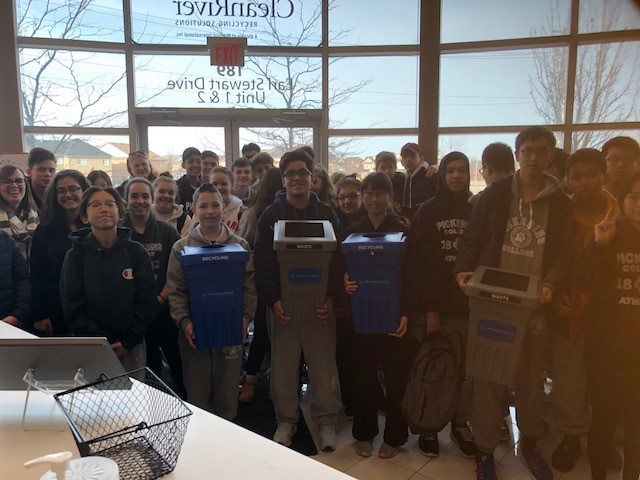
Start an Eco or Sustainable Club that is student led and include them as key stakeholders in the School Recycling Program. The Eco Club would be responsible for driving student awareness for the recycling program as well as hosting and organizing any events to support waste diversion and sustainability. Announcements, speaking at assemblies, and ensuring school events (like dances or sports games) are eco-friendly are just some of the ways the Eco Club can regularly advocate and motivate their fellow classmates to participate.
2. Learn From St. Andrew’s College School Recycling Program Success
St. Andrew’s College, a preparatory school for boys from grades 5-12, tasked CleanRiver with helping them implement a comprehensive environmental plan to increase their recycling program participation and reduce food waste.
“We worked with CleanRiver on developing graphics that show the kind of items that students might typically have and want to get rid of. The signage helps eliminate any confusion as to what is compostable, recyclable and so forth.” – Beth McKay, St. Andrew’s College
St. Andrew’s recycling bins are now located conveniently around the campus with clear signage to inform the community about proper recycling. It’s a single stream system for paper, glass, and plastic, so the recycling stations accept all recycled materials in one opening. The school also recycles electronics, batteries, and other materials. “The waste streams are matched to the hauling contract that we have negotiated. It’s different than what you would have at home, which is another reason to have clear and easily understood graphics at all recycling stations. It’s central to our goal of increasing the diversion rate,” McKay notes.
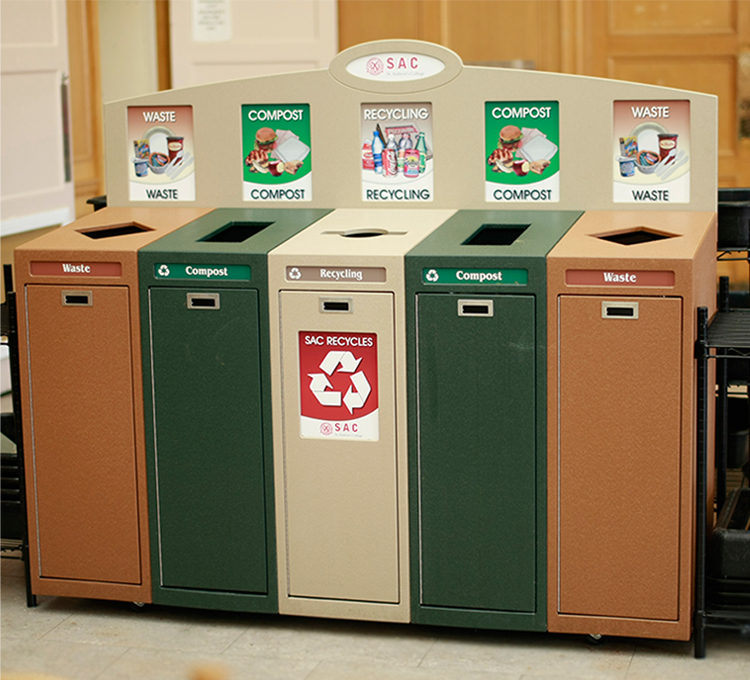
The new recycling and composting collection stations from CleanRiver helped St. Andrew’s College work towards increasing their recycling by 45% and significantly reducing food waste.
Sustainability has been wholly embraced by the entire community of approximately 700 faculty, staff and especially the students. “They are the ones who are really pushing the environmental programs,” noted Beth McKay, St. Andrew’s Director of Finance and Operations. “They’re really trying to do the right thing. We see it in the Dining Hall in particular with our composting system.”
College & University Students
1. Customize Your Recycling Bin Graphics
A recent study on recycling posters by the University of Toronto found that the addition of images to their graphics more than doubled their diversion rate. That’s why we highly recommend incorporating images and specific stream items into your bin signage.
At CleanRiver, we have noticed that Dioramas have been trending in University campuses lately. These campuses are finding it easy to communicate specific recyclable and compostable items to the students by including the actual packaging or item at the top of the bin.
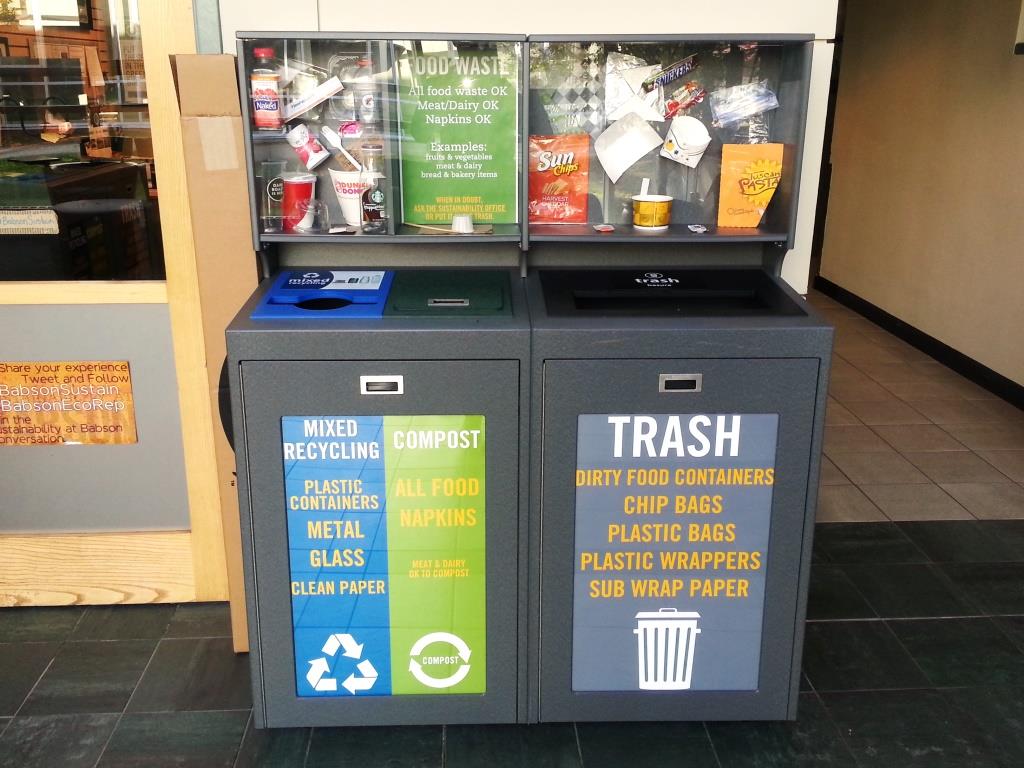
This bin style seems to be having an impact on student engagement, and facility management likes it since it is simple and inexpensive to update if the recycling program changes. This is just another form of customizing your stream graphics and messaging for effective participation in your recycling program.
2. Try Tent Cards
Tent cards for cafeteria tables are strongly recommended by CleanRiver Recycling Advisors. Simple messages like “Don’t forget to recycle” or “Did you know..” statements about your recycling streams and program have proven to be very effective as another reminder to students to clear their trays and toss their waste in the correct stream. It also serves as a reminder to students to actually clear their tables when they are done eating. Many campuses run into the issue of students just leaving their waste on the table so the custodians are the ones who end up tossing the trash. The problem is that because in many cases the custodial staff is a part of a separate union, the school recycling program is not included in their contracts so they won’t take the time to separate the streams.
3. Implement A Recycling Reward System
Portland State University has been working hard on becoming more sustainable and have put in place many recycling and waste reduction initiatives to motivate students to recycle. They have introduced reusable Tupperware in their dining halls and whenever students and staff return their dinnerware after eating they receive a free token that can be used towards their next food purchase. This type of reward system can be applied to many different aspects of your recycling program.
There are two ways to a University student’s heart: food & money! So consider ways you can reward students with points on their student cards or free coffee or beverages when they do the right thing.
4. Register For Recycle Mania
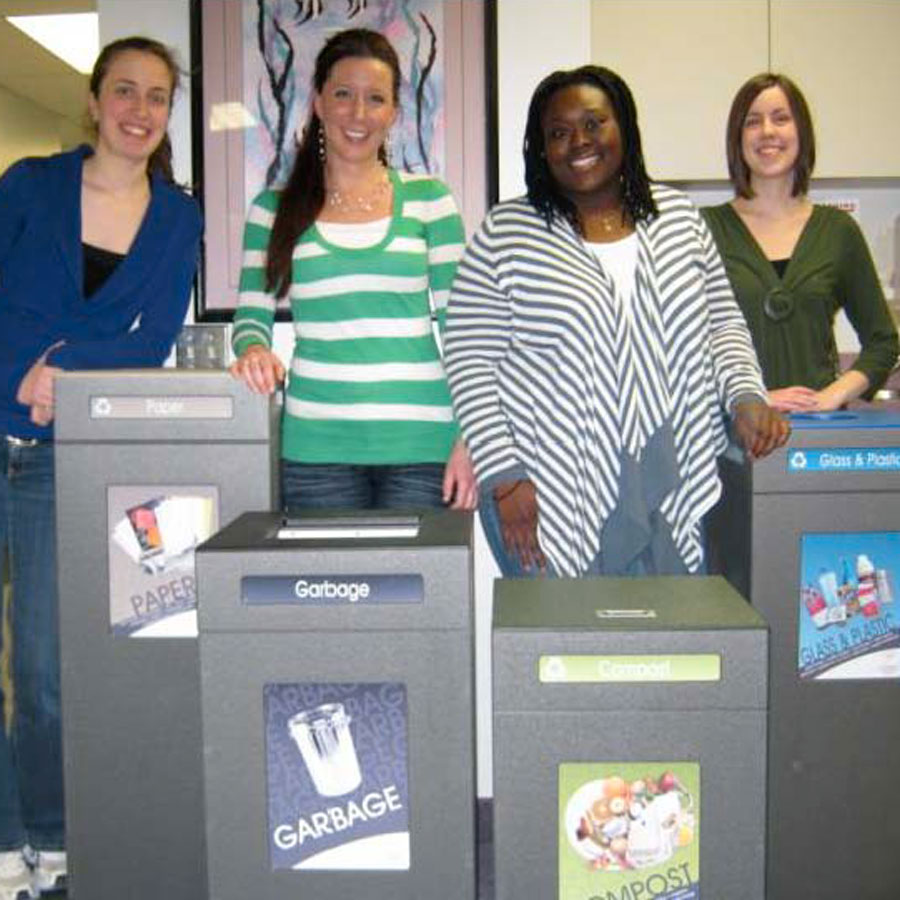
If you haven’t heard of Recyclemania, it’s a fair and friendly competition across the US and Canada that has become an effective tool in helping colleges and universities advance their recycling and waste reduction efforts.
Reasons to participate:
- Leverage school spirit to engage and motivate students and staff to recycle and reduce waste
- Benchmark your school’s recycling and waste reduction efforts against other campuses
- Generate attention and support for expanding recycling and waste reduction programs
- Reduce waste and your school’s environmental footprint
- Earn credit for AASHE Stars (Campus Engagement)
5. Teach Incoming Students About The School Recycling Program
With students hailing from different regions and cultural backgrounds it’s important to let freshman students know about your recycling expectations as soon as they arrive on campus. Tell them what’s recyclable, where the indoor recycling bins are, where the outdoor recycling bins are, and what your campus diversion rate goals are. This will help them understand how to recycle effectively. Include links to your sustainability initiatives, an overview of the recycling program, and even a map of all the bins on campus in the student handbook. Get students off on the right foot with the recycling program with their first step on campus.
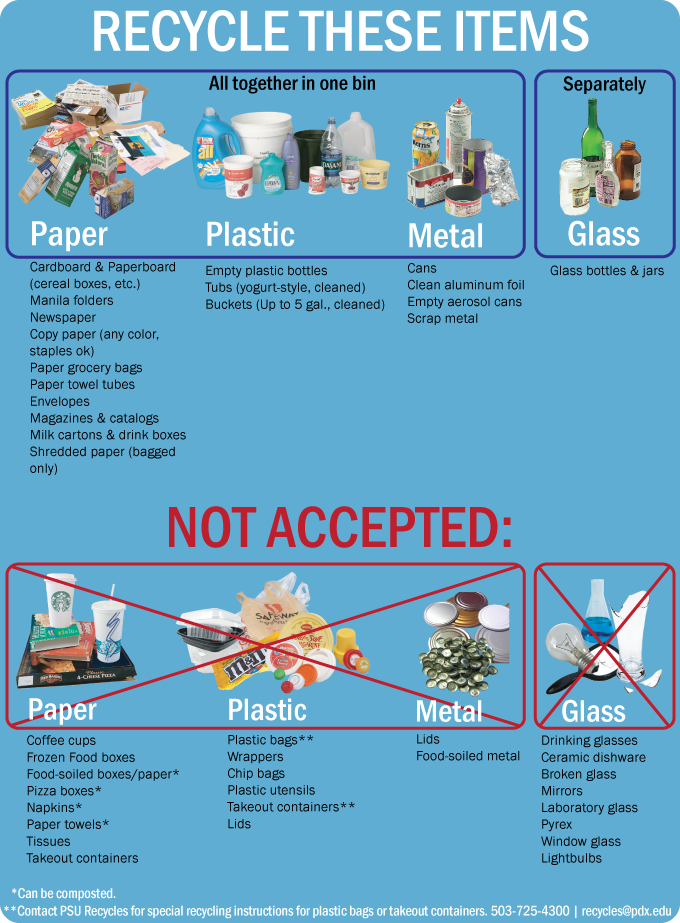
For more information on successful school recycling programs, check out our blogs 5 Step Checklist To Start A Successful School Recycling Program and 4 Most Commonly Asked Questions About Campus Recycling.
CleanRiver Recycling provides a variety of innovative, flexible and customizable recycling solutions. To determine the right solution to meet your needs, use the CleanRiver product selector.
If you have additional questions that weren’t answered in this blog post please call us at 1-888-646-4246 or email solutions@cleanriver.com.


